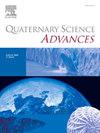Mid-to late-Holocene fluvial and coastal evolution in the Aceh River delta, Sumatra: effects of sea-level change, sediment supply, wave climate, tectonics and tsunamis
IF 2.2
Q2 GEOGRAPHY, PHYSICAL
引用次数: 0
Abstract
The Aceh River delta, northern Sumatra, is a subject of interest since the coastline was struck, more than any other, by the 2004 Indian Ocean Tsunami, the largest recorded in human history. Thereafter, significant scientific efforts focused on short-term dynamics to address the environmental effects of the tsunami, but the long-term evolution of the delta in this specific context of volcanic eruptions, megathrust earthquakes and tsunami landing, however, remains to be understood.
This study investigates the subaerial delta, based on shallow sediment borehole stratigraphies and C14 ages, in order to provide a partial reconstruction of the western and eastern fluvial and coastal evolution over the past 7 ky. It also benefits from comprehensive resistivity maps produced during recent helicopter-borne electromagnetic (HEM) surveys, and from earlier geomorphological mapping.
By prograding, the delta expanded seaward, exposure to swell increased, and a large strandplain accreted along the eastern delta front from 4 to 1 ky BCE. The delta thus evolved asymmetrically, with higher, tightly-stacked beach ridges in the east, which accreted at ∼6 km2/ky. Meanwhile, the Aceh River remained stable, along the western side of the delta, burying the western strandplain under its floodplain. After 0.5 ky BCE, delta progradation increased to ∼14 km2/ky, generating low-lying and wider spaced beach ridges to the east. A series of river avulsions between 0.2 ky BCE and 1.6 ky CE shifted the river course from the west to the center of the delta. An asymmetric cuspate promontory grew at 23 km2/ky after 0.5 ky in front of the current mouth of the river, projecting 1 km offshore of the current coastline, before undergoing erosion in the past few centuries.
Here, we discuss which combination of global and local factors, including sea level change, sediment supply, wave climate, tectonics, land use and tsunamis may explain the most salient processes during the growth of the Aceh River delta. Beyond its local interest, this study provides clues for a wider understanding of the complexity of subaerial delta development.
苏门答腊岛亚齐河三角洲全新世中后期河流和海岸演化:海平面变化、沉积物供应、波浪气候、构造和海啸的影响
苏门答腊岛北部的亚齐河三角洲是一个令人感兴趣的主题,因为2004年的印度洋海啸对海岸线的袭击比其他任何地方都严重,这是人类历史上最大的一次海啸。此后,重要的科学努力集中在解决海啸对环境影响的短期动态上,但在火山爆发、大型逆冲地震和海啸登陆的特定背景下,三角洲的长期演变仍有待了解。本研究以浅层沉积钻孔地层和C14年龄为基础,对陆基三角洲进行了研究,以期对过去7天来东西部河流和海岸的演变进行部分重建。它还受益于最近直升机载电磁(HEM)测量所产生的综合电阻率图,以及早期的地貌图。通过推进,三角洲向海扩展,膨胀暴露增加,在公元前4 ~ 1天沿三角洲东部前缘形成了大片的滨带平原。三角洲因此不对称地演化,东部有较高的、紧密堆积的海滩脊,以约6 km2/ky的速度增加。与此同时,亚齐河保持稳定,沿着三角洲的西侧,将西部滩平原淹没在其泛滥平原之下。公元前0.5 ky后,三角洲进积增加到~ 14 km2/ky,在东部形成低洼且间距更宽的滩脊。公元前0.2 ~ 1.6天的一系列河流冲刷使河道由西向三角洲中心移动。在过去的几个世纪里,一个不对称的尖角在河口前以每小时23平方公里的速度增长了0.5平方公里,在目前的海岸线离岸1公里处突出,然后受到侵蚀。在这里,我们讨论了全球和当地因素的组合,包括海平面变化,沉积物供应,波浪气候,构造,土地利用和海啸可能解释亚齐河三角洲生长过程中最突出的过程。除了对当地的兴趣,这项研究还为更广泛地理解陆上三角洲发展的复杂性提供了线索。
本文章由计算机程序翻译,如有差异,请以英文原文为准。
求助全文
约1分钟内获得全文
求助全文
来源期刊

Quaternary Science Advances
Earth and Planetary Sciences-Earth-Surface Processes
CiteScore
4.00
自引率
13.30%
发文量
16
审稿时长
61 days
 求助内容:
求助内容: 应助结果提醒方式:
应助结果提醒方式:


